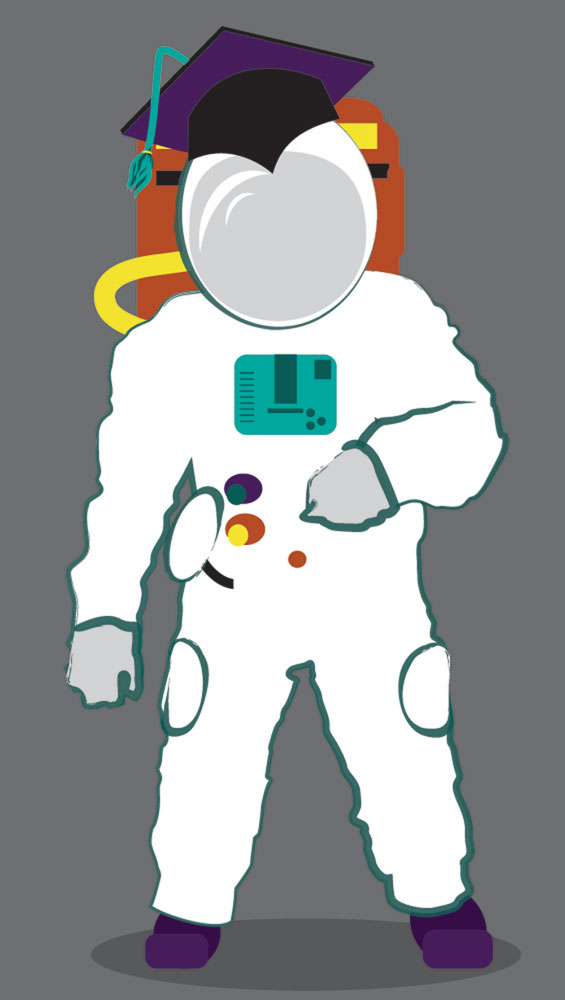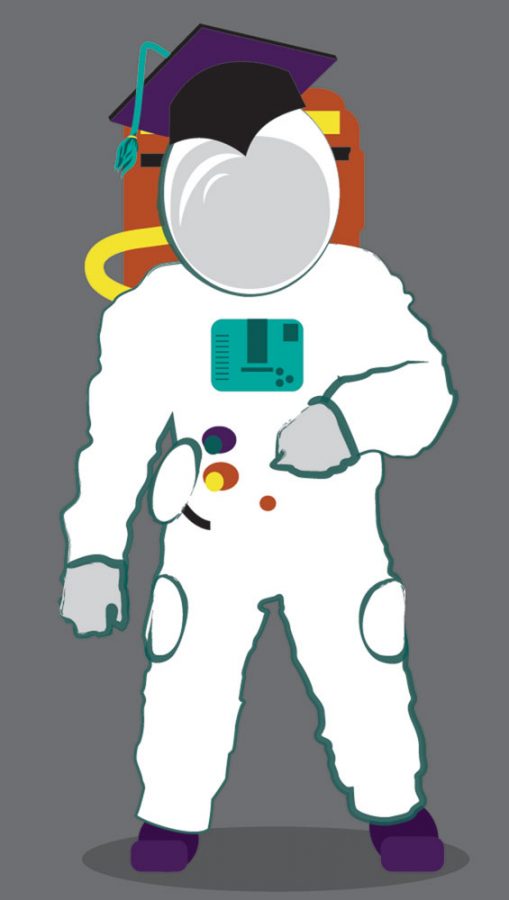
The first time Col. Michael Bloomfield flew a space shuttle, it felt like driving an old pickup truck down a gravelly road.
“The biggest thing about taking off with a space shuttle or any aircraft or spacecraft is that you have to get to a final speed of 17, 500 miles per hour. If you do the math, that means you’re doing 5 miles a second,” Bloomfield said. “You could go from the west coast of the U.S. to the east coast of the U.S. in just 10 minutes if you were flying that fast. You could go all the way around the world once every 90 minutes.”
That first flight was aboard NASA’s space shuttle Atlantis, on a trip to the Russian space station Mir. Over the next five years, Bloomfield would return to space twice as a mission commander during the construction and maintenance of the International Space Station. Keeping the ISS up and running with the assistance of other nation’s space programs has been one of NASA’s primary focuses for the past decade and a half.
The maintenance of a spacecraft is far from a simple task, and after the Columbia disaster in 2003 NASA began consulting with outside engineers and technical experts around the country in order to improve the safety and repairs of space flights. One of these consultants was Glenn Washer, MU professor of Civil and Environmental Engineering, who served as a technical discipline expert involved with some of NASA’s nondestructive testing programs.
“The group I participated in looked at issues surrounding maintenance and inspection of the vehicle to try prevent various types of accidents from happening,” Washer said. “For example, if one part was developing cracks, how do you inspect that vehicle while it’s on the ground to make sure it doesn’t have a crack developing and prevent a crisis during the next flight, and what kind of method do you use to find that crack?”
Part of Washer’s work revolved around the examination of problems that could occur with the tank of SOFI (spray-on foam insulation) located on a shuttle’s external shell and ways that a piece of hull might come off and damage a wing. Both were concerns that resulted from their proposed contribution to the Columbia disaster, and Washer worked remotely with engineers around the country to come up with solutions. Later, he also corroborated on work with NASA shuttles’ rocket control thrusters.
“So these were rockets that essentially were located around the shuttle. They controlled its movements and they had a history of developing cracks,” Washer said. “When a space shuttle came back to Earth they received maintenance and were tested on the ground and we were looking to develop new techniques to detect cracks and there were different testing programs to try to see how difficult it was to detect.”
This sort of aerospace and mechanical engineering has been an interest of former Columbia resident and Hickman alum Amanda Paige since high school. An attendee of the University of Alabama, Paige is majoring in Aerospace Engineering with aspirations of working for NASA initially instilled by her time with the Columbia Aeronautics and Space Association.
“CASA was a huge influence on my decision to go into aerospace engineering. It helped to increase my love of outer space as well as getting hands on and building,” Paige said. “I decided in the 6th grade that I wanted to get involved with space, but it wasn’t until my junior year that I knew I wanted to go into engineering.”
So far, Paige’s road to aeronautics has been lined with several technical and hands-on courses, even now, during her first year of college.
“Last semester I took a Computer Aided Design (CAD) class that helps to design a project on the computer in 3-D,” Paige said. “This semester I am in an intro to mechanical and aerospace engineering class and we have just completed our first project where we had to tip a [container] over. All of the components had to be inside of the container and had to tip after a 30 second time delay.”
One of Paige’s dreams is helping NASA in their delayed goal of sending humans back to the moon and out to Mars, which she hopes could serves as a first step in furthering mankind’s exploration of the stars. Paige, like many others, is fascinated with the vastness of space.
“When you look out into space, it’s amazing how dark it is. It’s very, very, very dark. The blackest black you’ve ever seen,” Bloomfield said. “It’s kind of interesting to be able to look out and see the blackness of space and then look down and see the blueness of the planet Earth.”
By Jake Alden



















































































